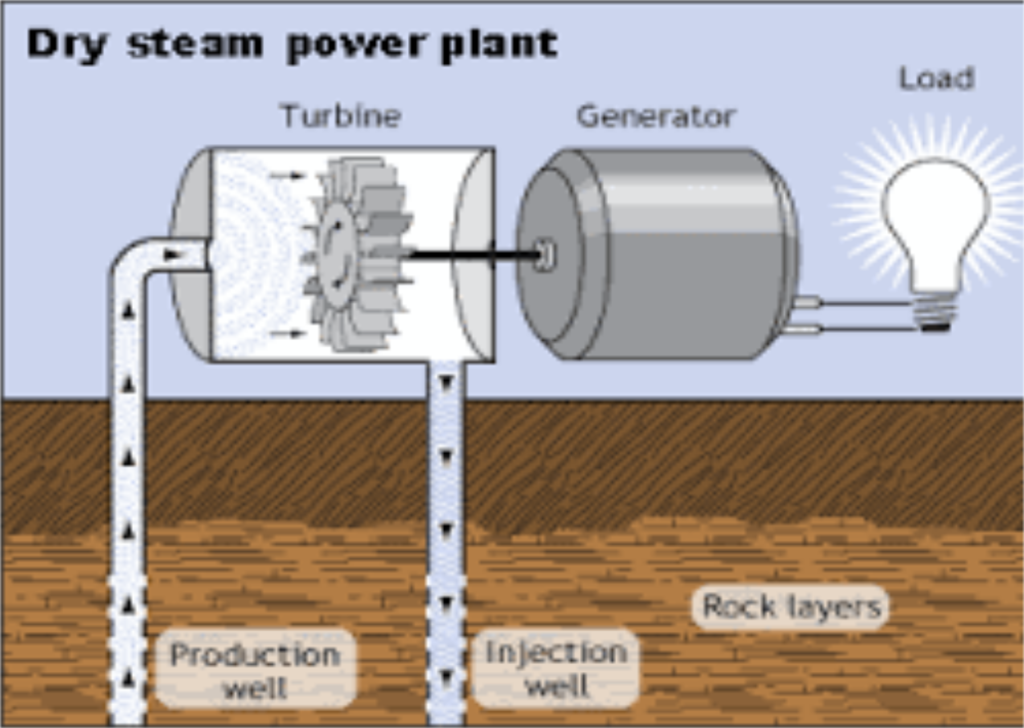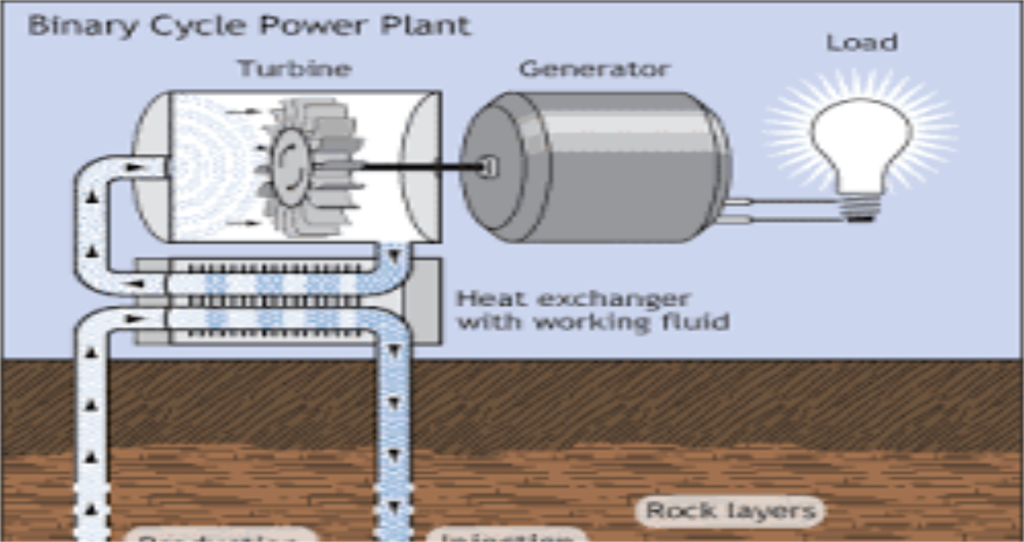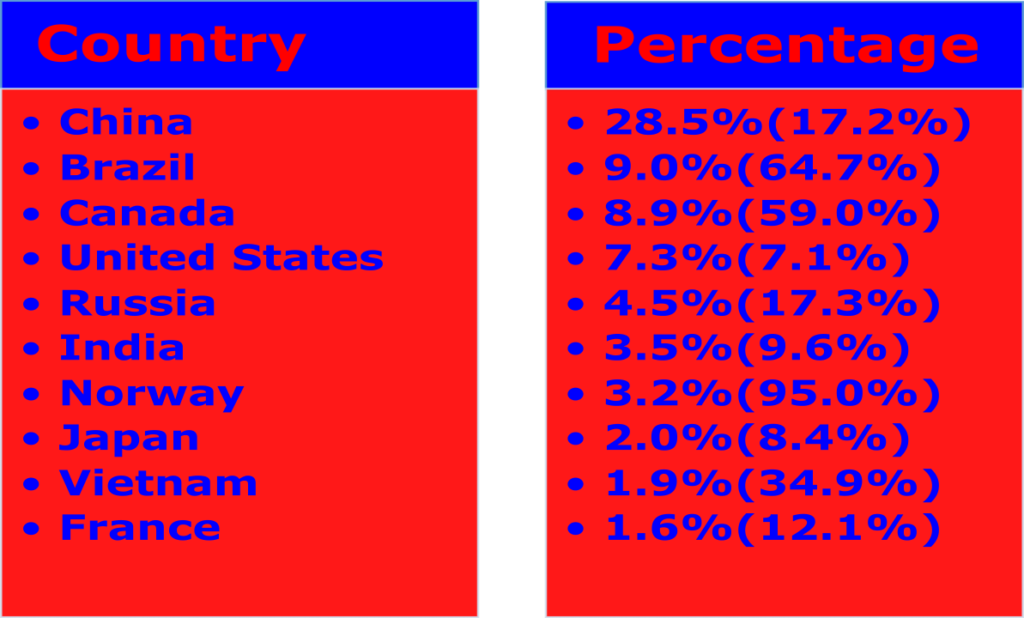
Geothermal power
Geothermal power or geothermal energy is a form of renewable, sustainable, and green energy. Where heat stored below the surface of the Earth harnessed and converted into heat and electricity. Radioactive decay of the elements in Earth’s mantle and outer core produces heat in the interior of the Earth. The Earth’s interior is very hot reaching up to 6000 °C. This heat is transferred to the surface of the Earth through convection, convection, and volcanic activity
History of Geothermal Power Use by Humans

Humans used geothermal power for thousands of years. Indigenous people of America started using hot Springs for cooking and bathing for almost 10,000 years ago. Ancients understood the potential of hot Springs for providing warmth and sustenance. Geothermal energy use played a significant role in societal and cultural practices in ancient civilisations. Greeks and Romans used geothermal baths heated by hot Springs. Bathhouses were constructed over natural hot springs and hot water from the hot springs was channelled into the baths. They created elaborate bathing complexes which acted as recreational facilities and centres for healing. Geothermal baths also acted as social hubs for these civilisations. Ancient Chinese were the first to use water from hot Springs for medicinal purposes. They also used hot Springs for bathing. In general, ancient civilisations used geothermal energy for bathing, cooking, heating and for medicinal purposes. Ancients used heat energy of the hot Springs and geysers for the above purposes.
The attempts to harness geothermal energy for power generation started in 18th and 19th centuries. The first industrial application of geothermal energy is the extraction of boric acid from hot Springs in Tuscany, in Italy by Francis Jacques de Larderel in 1818 or 1827. This pioneering action marked the turning point in geothermal energy utilisation for industrial applications. Prince Piero Ginori Conti tested successful generation of electricity using steam produced by hot Springs in Italy around 1904 establishing the first geothermal power generator. The first commercial geothermal power plant, Larderello, Italy, was inaugurated in 1913, which produced electricity from steam from geothermal reservoirs. This can be considered as a starting point for the development of large-scale geothermal plants worldwide.
20th century marked the global expansion of geothermal energy due to technological advancements with significant installations in United States, Iceland, Philippines, and New Zealand. Today geothermal energy evolved into a reliable, clean, sustainable, and renewable source of energy. Climate change acceleration and concerns over energy security makes geothermal energy extraction became more compelling. Geothermal energy extraction can help the transition to a low carbon future.
Geothermal Power Plants
Geothermal power plants harness the heat from the interior of the Earth and convert into electricity. Geothermal power extraction is useful for producing electricity or for direct heating by harnessing the heat produced by the radioactive decay of the elements in the earth’s crust or mantle. This heat is slowly transferred to the surface of the Earth through conduction, convection, and volcanic activity.
Types of Geothermal Power Plants
Three major types of geothermal power plants.
Dry steam power plants

This is the simplest and most efficient, which uses steam at high temperatures and pressures naturally produced by geothermal reservoirs to drive a turbine to produce electricity. These kinds of geothermal power plants can be installed in zones with steam filled fissures or fumaroles produced by volcanic activity. Examples for this type of power plants are geysers geothermal power plant in California and Larderello geothermal power plant in Italy.
Flash-steam power plants

Flash steam power plants use hot water from geothermal reservoirs with the temperature range from 150°C to 300°C. When high-pressure hot water is released into low-pressure tanks, the water flash into steam, which is used to drive a turbine to generate electricity. Flash steam power plants are the most common type. The Hellisheidi Power Plant in Iceland and the Cerro Prieto Power Plant in Mexico are examples of Flash team geothermal power plants.
Binary cycle power plants

Binary cycle power plants use hot water from geothermal reservoirs to heat working fluid with the lower boiling point than water, like isobutane or pentane. The vaporised working fluid is used to drive a turbine to produce electricity. Binary cycle power plants help to tap into a wider range of geothermal resources harnessing low-temperature resources for geothermal power extraction. Puna II Power Plant in Chile and the Reykjanes Power Plant in Iceland are examples of Flash team geothermal power plants.
The choice of each type of geothermal power plants depending on the specific characteristics of geothermal resource like temperature, pressure, and fluid composition. Type of geothermal power plant choice may also require consideration of technical, economic, and environmental factors.
Advantages of Geothermal Power
Geothermal energy is constantly produced in the interior of the Earth through radioactive decay, so it is a renewable and sustainable energy source. Extraction of geothermal energy is clean and environmentally friendly as geothermal power plants produce no or minimum emissions of pollutants and greenhouse gases. Geothermal power plants are not dependent on weather conditions or fuel prices so geothermal energy is reliable and consistent. Geothermal energy reduces the reliance on fossil fuels and reduce our dependence on non-renewable energy sources mitigating climate change impacts. Geothermal power plant requires small amount of land compared to solar or wind farms and its water usage is lower than fuel-based plants. Long life span, typically 30 to 50 years and low maintenance cost are other attractive features of geothermal power plants. Geothermal power plants can support decentralised power generation leading to distributed energy generation and energy independence. Geothermal energy contributes to energy security by diversifying our energy portfolio, and by reducing our reliance on a single source of energy. Presence of geothermal resources near areas of high energy demand reduces the transmission cost of energy as well as transmission losses through localised energy production. Geothermal power can be integrated with the other renewable sources of energy. Geothermal power plants are continuous and reliable source of electricity, so it is useful for base load power generation. Geothermal power is one of efficient and cost-effective energy solution as it is versatile. It can be used for various applications like generating electricity to power homes, businesses, and industries, providing heating and cooling, cost-effective way to heat and cool buildings. It can be used in industrial applications like food processing, paper making and textile manufacturing. Another use of geothermal power is in desalination plants. Geothermal energy is useful in supplying hot water for homes and businesses.
Disadvantages of Geothermal Power
Geothermal resources are not distributed uniformly across the globe. Suitable geothermal resources are found in areas with the volcanic activity or in tectonic plate boundaries. Sometimes these locations are challenging because they are environmentally sensitive areas or remote locations. So geothermal power plants are location specific. Construction of geothermal power plants requires significant investments in exploration, drilling, and equipment installation which is usually several times higher than conventional energy power plants. Geothermal power extraction can have visible environmental footprint. Geothermal fluids can alter water chemistry and temperature affecting aquatic life. Local ecosystems and water resources can also be affected by geothermal fluids. Seismic activity can be induced by drilling especially in areas with pre-existing geological faults. Geothermal power plants can change land use and ecosystems. Release of trace gases from geothermal fluids can cause odours. Geothermal power plants have limited scalability. Sizes of geothermal reservoirs is limited, smaller capacity compared to conventional power plants so they are not suitable for large scale electricity generation. The capacity to generate power may decrease over time, reducing the long-term power generation capability. Overexploitation through prolonged and expensive extraction of geothermal fluids may raise sustainability concerns by depleting underground reservoirs and potentially reducing the efficiency and sustainability of geothermal power generation. Geothermal power extraction can lead to opposition from public, so it is important to manage their perceptions and concerns regarding environmental impacts, potential seismic risks, gas, and noise pollution from power plants. Injection and extraction of fluids into Earth’s crust may lead to the risk of earthquake and subsidence, or the sinking of the ground. In direct use applications for example district heating, the demand for heat may not align with constant availability of geothermal energy requiring supplemental heating resources. Extracting geothermal resources from deeper and hotter regions of Earth’s crust can pose technical challenges. Geothermal resources cannot be easily accessible even though they are available in abundance in some regions for example tapping the heat of the magma chambers of super volcanoes. Some of the magma chambers of super volcanoes are very large.
Relationship of Volcanoes and Geothermal Power Plants
Volcanoes play an important role in the development and operation of geothermal power plants. The relationship between geothermal power extraction plants and volcanoes is closely tied to the geological processes that led to the formation of geothermal resources. Volcanic activity and tectonic plate boundaries play an important part in the formation of geothermal resources. Heat from the Earth’s interior is concentrated in geothermal reservoirs. These reservoirs contain hot water and steam, which can be harnessed to generate electricity.
Magma chambers in Volcanic regions heat the groundwater, which can then produce high-temperature steam. Dry steam power plants utilise the high-pressure steam from volcanic geothermal reservoirs directly to produce electricity. These kinds of power plants are typically stalled in regions of active volcanic activity, and they are well-suited for volcanic regions with the ample steam resources. Volcanic activity contributes to the formation of hydrothermal reservoirs, which are underground aquifers heated by volcanic activity. Flash steam power plants use the hot water contained in these geothermal reservoirs to produce electricity. Volcanic regions have the necessary high temperatures and pressures for effective Flash steam power generation.
Binary cycle power plants utilise lower temperature geothermal fluids found in the volcanic regions to produce electricity.
In conclusion, volcanoes have a complex relationship with the geothermal power extraction. They provide a viable source of heat for geothermal power generation, but they also pose potential challenges for geothermal power plant operations. Volcanic eruptions can disrupt plant operations and damage infrastructure. Seismic activity associated with the volcanoes can cause safety concerns. Geothermal power plants in volcanic regions must be carefully designed to stand potential seismic events and incorporate safety measures to protect personnel and infrastructure. Careful planning, design, and monitoring are crucial to ensure the safe and sustainable utilization of geothermal energy in volcanic areas.
Geothermal Power Extraction Potential
Earth has tremendous internal heat content about 20% of this is residual heat from planetary accretion and the remainder is attributed to past and current radioactive decay. With an estimated global geothermal potential of 150,000 Megawatts, only a small fraction (10.02%) has been tapped. This leaves a vast amount of untapped potential, equivalent to 134,970.3 Megawatts, waiting to be harnessed. Europe has significant unexploited potential for geothermal power extraction. With an estimated geothermal potential of 47 gigawatts, only a small fraction (12.6%) has been tapped, leaving a vast amount of untapped potential, equivalent to 40.6 Gigawatts. The difference between geothermal energy as well as nuclear energy is that we construct nuclear power plants to extract heat from nuclear fission in a nuclear reactor. Many processes like uranium mining, uranium enrichment and construction of fuel rods as well as construction of nuclear power plants must complete before we can extract this heat. But on the other hand, geothermal energy is already available under earth ready to extract from radioactive decay of elements. Geothermal energy may also avoid nuclear accidents like Chernobyl and Fukushima. As far as Geothermal energy the deeper the drilling goes the hotter it gets. Some places with the tectonic plate movements or active volcanoes like Iceland, heat is closer to the surface. Magma ducts, hot springs, and hydrothermal circulation may increase this heat. So far as countries have exploited only very little percentage of it. The cost of geothermal power extraction is coming down due to technological advances. According to the Department of Energy US,2021, geothermal energy costs about $0.05/kWh.
Top Geothermal Power Extracting Countries
| Country | Installed capacity | Estimated Potential |
| United States | 3,794 Megawatts | 118 Gigawatts |
| Indonesia | 2,356 Megawatts | 40 Gigawatts |
| Philippines | 1,935 Megawatts | 15 Gigawatts |
| Türkiye | 1,682 Megawatts | 11.6 Gigawatts |
| New Zealand | 1,037 Megawatts | 41.4 Gigawatts |
| Mexico | 962.7 Megawatts | 10 Gigawatts |
| Kenya | 944 Megawatts | 7.2 Gigawatts |
| Italy | 944 Megawatts | 10.3 Gigawatts |
| Iceland | 754 Megawatts | 13 Gigawatts |
The table above shows the installed capacity and the estimated potential of top 10 geothermal power extracting nations approximately. Estimated potential depends on the depth of the well. Even if we focus only on the high pressure and very hot geothermal fluids in volcanic areas, available geothermal energy in volcanic regions is very high. The table below shows the part geothermal energy plays in national and global energy production in percentages.

Conclusion
As far as geothermal energy extraction we are in the growth stage. There is a long way to go to fully realise the full potential of this energy source.
Source of pictures geothermal thermal plants, www.eia.gov.